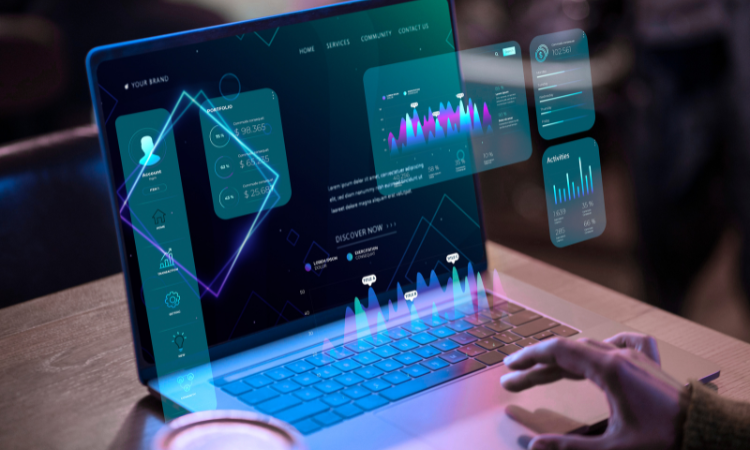You’ve launched a survey, collected open-ended feedback, pulled in transcripts from customer calls, maybe even scraped through chat logs and reviews. Now you’re staring at a spreadsheet filled with hundreds or thousands of qualitative responses. Comments. Rants. Suggestions. Praise. Complaints.
Your customers are telling you what they need but without structure, it’s nearly impossible to connect the dots.
Whether you're in CX, marketing, product, or research, this is a familiar struggle. You’re not just looking for surface-level data, you want to understand why your customers feel the way they do, and what recurring patterns are worth acting on.
This is exactly where thematic analysis in qualitative research comes in.
It’s a powerful method that helps you identify, analyze, and interpret patterns across qualitative data — whether it’s survey feedback, reviews, interviews, or support tickets. With thematic analysis, you move from raw responses to clear, actionable insights that actually drive change.
In this blog, we’ll unpack what thematic analysis really is and where it fits within the broader landscape of qualitative research. You’ll get a clear understanding of the step-by-step process for conducting thematic analysis, learn where many teams go wrong, and discover how to do it right. So, let's get started!
TL;DR
- Thematic analysis is a qualitative research method used to identify and interpret recurring patterns in open-ended feedback — turning raw responses into actionable insights.
- Thematic analysis is essential for businesses looking to understand the why behind metrics like CSAT, NPS, and churn — enabling better prioritization and cross-team alignment.
- The six-phase framework by Braun & Clarke outlines a clear path: familiarization, coding, theme search, review, naming, and reporting — adaptable across business functions.
- From retail to healthcare to SaaS, organizations use thematic analysis to identify gaps, improve experiences, and make customer-centric decisions at scale.
- Advanced approaches like framework analysis, combining with sentiment scoring, and peer debriefing make thematic analysis more strategic and scalable.
- Zonka Feedback’s AI-powered thematic analysis brings speed, structure, and sentiment to feedback processing helping you scale insight generation, surface emotional signals, and align teams with clarity. You can get early access to its AI Feedback Intelligence or start a free trial of its existing Survey & CXM platform.
Eliminate Guesswork with AI-Driven Thematic Analysis📈
Prioritize what matters and drive action in real-time. Turn qualitative feedback into measurable insights tied to CSAT, NPS, and churn using Zonka Feedback's AI-powered Thematic Analysis.

What is Thematic Analysis?
At its core, thematic analysis is a method used to identify, analyze, and interpret patterns within qualitative data. These patterns, often called “themes”, help you understand the underlying ideas, experiences, or sentiments people express in open-ended feedback.
Put simply: if you’re looking at a collection of comments, reviews, survey responses, or interviews and trying to figure out what people are really saying — thematic analysis gives you a structured way to do that.
What makes thematic analysis so widely used is its flexibility. It’s not tied to a specific theoretical framework, which means you can use it whether you're working in customer experience, product research, healthcare, education, or social sciences. And unlike statistical methods, it doesn’t focus on numbers; it focuses on meaning.
Thematic Analysis in Qualitative Research
In qualitative research, thematic analysis plays a foundational role. Whether you’re analyzing interviews, focus group transcripts, or feedback from a user study, this method helps you systematically interpret meaning from text.
It’s especially valuable because it's flexible and theory-neutral — meaning you can use it whether you're conducting formal academic research or just trying to understand customers better. While other methods like grounded theory focus on building new models from scratch, and content analysis often leans quantitative, thematic analysis is all about clarity. It helps you draw meaningful insight from raw narratives and apply it in the real world.
So whether you're a UX researcher exploring product friction or a healthcare analyst reviewing patient feedback, this is the method that helps you find patterns that actually lead to change.
Thematic Analysis Example: From Raw Customer Experience Data to Insight
Let’s say you’ve collected this open-ended feedback from a post-purchase survey:
-
“Delivery was quick, but the packaging was really poor.”
-
“The item arrived damaged — customer support took too long to respond.”
-
“I love the product, but I had no idea when it would actually be delivered.”
Now imagine scrolling through hundreds of similar responses. With thematic analysis, you’d start tagging phrases like “packaging was poor”, “item arrived damaged”, and “support took too long” — grouping them into broader categories like:
-
Logistics issues
-
Poor packaging
-
Delivery communication gaps
These become your themes and now, instead of vague complaints, you’ve got structured insights that show you exactly where customer experience is breaking down.
Why Thematic Analysis Matters for your Business?
Qualitative data like open-text survey comments, support transcripts, user interviews, product reviews, and even in-app feedback holds the why behind behavior — why someone churned, why onboarding felt clunky, why a feature didn’t hit the mark. But unless you have a way to systematically analyze it, you’re stuck reading quotes instead of recognizing what’s really going on at scale.
That’s where thematic analysis becomes more than a method. It becomes a core capability, one that helps your teams connect the dots, align faster, and make better decisions. When applied effectively, here’s what thematic analysis enables:
-
Uncovers root patterns hidden in plain sight: What looks like scattered complaints often points to one issue — like “unclear onboarding” or “poor status updates.” Thematic analysis helps you zoom out and spot the root cause.
-
Turns scattered feedback into a clear narrative: It connects related comments and identifies recurring sentiments, so your team can focus on what matters — not just what’s loud.
-
Aligns teams around the same customer truth: When insights are grounded in actual qualitative themes, it’s easier to align product, CX, and marketing on priorities — without endless debate.
-
Helps prioritize based on frequency and emotional weight: Not all feedback is equal. Thematic analysis highlights both what’s common and what’s emotionally charged — helping you act on what’s urgent and impactful.
-
Bridges the gap between metrics and meaning: CSAT scores may look good on paper — but if the underlying comments tell a different story, thematic analysis will surface it fast, before churn shows up in the data.
6 Phases of Thematic Analysis by Braun and Clarke
You now understand why thematic analysis is essential. But how do you actually do it?
Psychologists Virginia Braun and Victoria Clarke developed a clear, six-phase process that brings structure, clarity, and repeatability to qualitative data analysis. It has become the go-to structure in both academic and applied research and yes, it works brilliantly in business too.
Let’s break it down, phase by phase, with a lens on real-world application and business relevance.
1. Familiarization with the Data
This isn’t just skimming.
Before you start tagging or coding anything, spend time reading and re-reading your data. Whether it’s NPS verbatims, user interview transcripts, or support chat exports — the goal here is to immerse yourself in the content without trying to analyze it yet.
💡Look for emotion, repetition, contradictions, and language patterns. These often signal themes waiting to emerge.
You might jot down early observations, but don’t jump ahead. Let the feedback speak to you before you start speaking for it.
2. Generating Initial Codes
Now you start marking up the data — assigning short labels (“codes”) to interesting chunks of text. A single sentence might get one or multiple codes depending on its content. Think of codes as the raw ingredients of your themes.
Example:
-
Feedback: “Delivery was fast, but I had no idea when it would arrive.”
-
Codes: Quick delivery, Lack of delivery communication
You can do this manually (sticky notes, spreadsheets) or with thematic analysis tools like Zonka Feedback, which can automate parts of this process with AI tagging and sentiment mapping.
3. Searching for Themes
Here’s where the magic starts to happen. You look at all your codes and start grouping them into potential themes. Ask yourself:
-
Which codes are saying similar things?
-
Are there patterns or concepts that cluster together?
-
What’s being said repeatedly in different ways?
You're not labeling the data anymore, you're starting to interpret what it means.
Example:
-
Codes: Frustrating login, Hard to reset password, Too many security steps
-
Theme: Access friction in onboarding
4. Reviewing Themes
Now that you have draft themes, it’s time to pressure-test them.
-
Are they too broad or too narrow?
-
Do they accurately represent the data?
-
Is there enough evidence to support each theme?
-
Are you missing anything important?
This phase is about quality control, not quantity. You might merge, split, or discard themes altogether — and that’s okay.
💡Go back to your raw data. Make sure each theme is truly grounded in what people actually said; not just what you expected to find.
5. Defining and Naming Themes
Once your themes are validated, give each one a clear, specific name, something more meaningful than just “UX issues” or “negative feedback.”
Ask:
-
What does this theme really capture?
-
How can I name it so it’s understandable across teams?
-
A strong theme name should make it obvious what action or insight it points toward.
Examples:
-
Instead of “Communication Issues,” go with “Lack of Delivery Updates”
-
Instead of “Usability,” try “Confusing Account Setup Flow”
6. Producing the Report (or Insight Output)
This final step is where analysis turns into actionable insight. Depending on your audience, this could be:
-
A full research report
-
A CX summary dashboard
-
A slide deck for product prioritization
-
An insight snapshot integrated into Zonka Feedback
Whatever the format, the goal is to communicate your findings clearly and persuasively, tying each theme back to your research goal or business question.
💡Use quotes from real customers to support each theme. Nothing cuts through the noise like hearing the issue in the user’s own words.
The Braun and Clarke model may come from academia, but it’s built for clarity and that’s exactly what your business needs when navigating qualitative feedback at scale. Done right, this six-step process helps you move from scattered voice-of-customer data to structured, strategic insights your team can actually use.
Real-World Use Cases: How Industries Apply Thematic Analysis
Let’s look at how teams across industries apply the thematic analysis process — from tagging coded data extracts to delivering final reports that guide decisions.
a. Retail
Retail teams deal with constant volumes of feedback — from POS surveys, store reviews, and post-purchase comments. Most of it comes in raw, emotional form. Here's how thematic analysis helps:
-
Reveals recurring experience gaps like “long checkout wait” or “couldn’t find assistance.”
-
Groups scattered comments into themes like “service delays” or “staff availability.”
-
Informs training, store layout, or even staffing strategy.
Retail teams use reflexive thematic analysis to interpret not just what’s said, but what’s implied — making each store visit more predictable and customer-centric.
b. Healthcare
In healthcare, qualitative feedback often reflects emotion, vulnerability, and trust. Patients don’t say “fix your discharge process” — they describe confusion, fear, or being ignored. Thematic analysis helps by:
-
Surfacing nuanced themes like “emotional disconnect during treatment” or “unclear medication instructions.”
-
Helping hospitals link sentiment to process gaps without flattening the human voice.
-
Driving improvements in communication, care quality, and policy.
For qualitative researchers, especially in healthcare, reflexive thematic analysis emphasizes empathy, interpretation, and ethical clarity.
c. Fintech
Users in fintech often leave short, blunt feedback like “too slow,” “not sure it worked,” or “looked sketchy.” These are clues, not conclusions. Thematic analysis helps:
-
Groups vague feedback into structured insights like “trust issues in payment UI” or “KYC process confusion.”
-
Powers prioritization for product, design, and onboarding flows.
-
Ties feedback directly to metrics like conversion rate, churn, or NPS.
In fast-moving digital products, qualitative content analysis allows teams to extract meaning without needing customers to articulate it perfectly.
d. SaaS & B2B
In SaaS, product feedback often arrives through calls, support tickets, and exit surveys. And most of it blends technical friction with expectation misalignment. Thematic analysis helps:
-
Identify root causes like “unclear trial setup”, “missing integrations,” or “steep learning curve.”
-
Product and CX teams align on themes that impact retention and onboarding.
-
Feed directly into final reports shared with product, marketing, and leadership.
When multiple teams need to align on what customers are saying, thematic analysis brings structure and clarity to every voice.
e. Education & EdTech
Students and educators regularly share feedback through open surveys, forums, and app reviews but clarity is hard to extract from scattered inputs. Thematic analysis helps by:
-
Surfacing patterns like “grading felt inconsistent” or “platform hard to navigate.”
-
Supporting changes in course design, tech interface, and communication.
-
Prioritizing recurring issues that impact learner satisfaction and engagement.
Coded data extracts from multiple sources come together to support continuous improvement at scale.
f. E-commerce & Logistics
From package delays to order issues, logistics feedback tends to be urgent, emotion-driven, and high in volume. Here, thematic analysis:
-
Detects themes like “unclear tracking updates”, “package arrived damaged”, or “returns were difficult.”
-
Links operational gaps to customer frustration making feedback useful for ops teams, not just support.
-
Improves post-purchase journeys and delivery confidence.
This turns chaotic comment streams into actionable themes connected to clear business outcomes.
Strengthening your Thematic Analysis: From Coding to Rigor
Strong insights don’t just come from collecting qualitative data — they come from how rigorously you interpret and structure it.
You can follow the steps of thematic analysis, but the real impact lies in how well you code, cluster, and validate your findings. This is what transforms scattered feedback into insight your team can trust, prioritize, and act on.
In this section, we’ll unpack the key techniques and best practices that elevate your thematic analysis from functional to strategic especially when applied consistently and at scale. Let’s break it down.
1. Coding and Developing Initial Themes
Think of coding in thematic analysis as the moment where raw data starts to take shape. It’s the process of labeling snippets of feedback — words, phrases, or sentences — with short codes that capture what’s being said.
This step matters because it forms the entire foundation of your analysis. Weak or inconsistent coding leads to vague themes and diluted insights.
Here are a few widely used approaches:
-
Line-by-line coding: Great for detailed transcripts or interviews. It forces you to engage closely with each response, helping surface nuance others might miss.
-
Descriptive vs. interpretive coding: Descriptive codes capture what’s said directly (e.g., "slow delivery"), while interpretive codes dig into underlying meaning (e.g., "post-purchase frustration").
-
Manual vs. automated coding: For smaller datasets, manual coding works fine. But when you’re analyzing hundreds (or thousands) of responses, sentiment analysis tools help you auto-tag feedback based on key phrases, intent, and sentiment — reducing the grunt work while improving scale.
For Example:
-
Feedback: “The app kept logging me out and I couldn’t reach support.”
-
Possible codes: Login issues, App instability, Lack of support access
2. From Codes to Themes: Making Meaning
Once you’ve coded your data, it’s time to start making meaning — grouping related codes into higher-level patterns known as themes. This isn’t about simply counting similar tags — it’s about interpreting what they collectively point to.
For instance:
Codes like “support never replied,” “chatbot didn’t help,” and “no response from help desk” → might roll up into the theme: Support felt unresponsive
This process is iterative and judgment-driven. As you review your codes, ask:
-
Are these codes all pointing to the same user problem?
-
Is this theme meaningful and distinct?
-
Can I summarize this insight in a way that drives decisions?
You're crafting a narrative that reflects the patterns in user pain, perception, or praise — not just classifying data.
3. Refining and Validating Your Themes
Now that your themes are coming together, it’s time to stress-test and sharpen them. Refining means:
-
Making sure your themes are clearly defined and non-overlapping
-
Checking that each theme is evident in the data, not just inferred
-
Asking whether each theme ties directly back to your original goal or research question
Visual tools like mind maps or theme trees can help spot redundancies or gaps. These are especially helpful when you're presenting insights to cross-functional teams and want to ensure alignment.
💡Thematic analysis software like Zonka Feedback allow you to group tags and view them as themes, track sentiment within each theme, and even report them by priority or trend — making refinement collaborative and visible.
Ask:
-
Are these themes too vague?
-
Do they reflect real trends, or isolated frustration?
-
Would someone unfamiliar with the project interpret them the same way?
-
Strong themes are precise, actionable, and relevant — not generic labels.
4. Ensuring Rigor and Trustworthiness
Finally, let’s talk about credibility. Thematic analysis may be flexible, but it still needs to stand up to scrutiny — especially when your insights inform product decisions, customer experience changes, or leadership strategy.
Here’s how to ensure rigor:
-
Saturation: Are you hearing the same themes repeatedly across your data? This often signals you’ve reached saturation — meaning you’ve captured the full range of issues, and new data isn’t changing the picture.
-
Reflexivity: Your own biases influence interpretation. Keep a reflection log or check-in with peers: Are we reading what’s actually there, or what we expected to find?
-
Inter-rater reliability: If multiple people are coding, compare and calibrate often. This improves consistency and ensures insights aren’t one person’s guesswork.
-
Member checking: In interview-based research, consider validating your themes with participants. It helps confirm you’ve interpreted the feedback correctly.
-
Audit trail: Keep documentation of your coding decisions, theme evolution, and notes. In Zonka Feedback, you can do this easily by logging theme/tag history across the project timeline.
Advanced Techniques in Thematic Analysis
If you’ve already worked with thematic analysis, you know the basics: code, cluster, and report. But when you're dealing with large volumes of feedback, running ongoing analysis across multiple channels, or needing to align insights with strategic decision-making, it’s time to go a step further.
These advanced techniques help you bring more structure, scale, and sophistication to your qualitative research without losing the nuance that makes it valuable.
a. Template and Framework Analysis: Bringing Structure to Chaos
Sometimes, starting from scratch isn’t efficient especially if you're working with recurring research goals or known categories of interest.
Template analysis allows you to begin coding with a predefined structure. You create an initial set of themes (a template), often based on prior research, team priorities, or existing customer journey stages and then refine it as you analyze the data.
Framework analysis takes this further by organizing your data into a matrix format, often aligning it with business dimensions like:
-
Stages in a customer journey
-
Feedback from different personas
-
Department-specific insights (Product vs Support vs CX)
For instance, a CX team might track all feedback across the Explore → Purchase → Onboard → Use → Support journey — applying a consistent framework to tag issues, wins, and gaps at each stage. Using template and framework analysis methods will boost consistency and are especially powerful for cross-team collaboration or longitudinal studies.
b. Using Qualitative Analysis Tools to Scale Smarter
When you’re working with hundreds or thousands of feedback entries, manual analysis becomes a bottleneck. Tools like Zonka Feedback, NVivo, or Atlas.ti offer advanced capabilities to help you:
-
Auto-tag feedback based on keywords, entities, or through sentiment analysis
-
Group related responses into themes dynamically
-
Apply filters to view feedback by channel, emotion, or product line
-
Visualize insights using heatmaps, theme clusters, or dashboards
With Zonka Feedback, for example, you can surface high-impact themes by role (e.g., Product vs Marketing), track how sentiment evolves around each theme, and view impact trends over time — all within a single interface.
c. Combining Thematic Analysis with Other Qualitative Methods
Thematic analysis plays well with others. Combining it with other qualitative or mixed-method approaches can add deeper context or validation to your findings. Some effective combinations:
-
Phenomenological analysis: Use when you want to understand lived experiences in depth. Thematic analysis can help surface broad themes, while phenomenology adds narrative depth.
-
Content analysis: Useful when you're quantifying qualitative data (e.g., counting how often certain words or ideas appear).
-
Sentiment analysis + thematic clustering: Adds an emotional layer to your themes — helping you prioritize based not just on frequency, but intensity.
For instance, a product team might combine thematic analysis with sentiment scoring to prioritize the most emotionally charged complaints — not just the most common.
d. Peer Debriefing and Member Checking: Validating Your Insight
Even the most experienced analysts bring their own biases into the process. These two techniques help keep your insights objective and credible:
Peer debriefing involves sharing your findings with colleagues who weren’t part of the original analysis. Their fresh perspective can challenge assumptions, reveal blind spots, or offer new ways to frame themes.
Member checking involves going back to the original participants (in interviews or user studies) and asking whether your interpretations match their intentions. It’s rarely done in fast-paced business settings but can be invaluable for sensitive topics or critical decisions.
💡In a business setting, peer debriefing can also take the form of collaborative dashboard reviews — where CX, product, and research teams align on theme definitions and implications.
Common Pitfalls to Avoid in Thematic Analysis
Even if you’re following the process step by step, thematic analysis can go off-track in subtle ways especially when you’re moving fast, working cross-functionally, or under pressure to “show insights” quickly. Avoiding these common pitfalls can be the difference between themes that drive change and themes that get ignored.
-
Coding Too Broadly or Too Narrowly: Labels like “bad experience” are too vague to drive action, while overly specific tags like “delivery delay on March 5th” clutter the analysis with noise. The solution? Use mid-level codes like “billing confusion” or “onboarding drop-off” that balance detail with generalizability.
-
Letting Bias Influence Theme Development: When you’re close to the product or research, it’s easy to find what you expect or want to see in the data. This skews insight. To minimize bias, involve peers in reviewing codes use qualitative data analysis software that promote consistency and reduce subjectivity in tagging.
-
Skipping the Review and Validation Stage: Draft themes might look solid at first, but often overlap, lack clarity, or miss key insights. Always take time to refine them. Validate against the original data, eliminate redundancy, and ensure each theme ties back to your objective.
-
Overlooking Context Behind Quotes: A single sentence like “the process was confusing” can point to UX, onboarding, or billing — interpretation without context leads to misdirection. Always review quotes in full and consider metadata like customer type or journey stage to maintain accuracy.
-
Not Linking Themes to Business Outcomes: Themes that don’t tie back to KPIs or decision points tend to get ignored. Make sure each insight connects to something tangible, whether it’s churn reduction, improved onboarding, or CSAT uplift, so teams can align and act on it.
How Zonka Feedback Powers Thematic Analysis at Scale?
You’ve done the hard part: collecting feedback. But with hundreds or thousands of open-ended responses coming in from surveys, NPS, reviews, emails, and support channels; how do you actually make sense of it all?
This is where Zonka Feedback’s AI Feedback Intelligence steps in. It helps you move from noise to clarity in minutes — without losing the human insight that makes qualitative feedback so valuable.
Here’s how Zonka Feedback empowers you to run thematic analysis at scale, with speed, structure, and strategy baked in.
1. Auto-Tagging Themes with AI-Powered Precision
Instead of manually sifting through responses, Zonka Feedback uses AI-powered tagging to identify recurring themes automatically. Whether your customers mention “delivery delays,” “pricing confusion,” or “agent rudeness,” the system detects and labels them — consistently and instantly.
This will help you reduce manual workload, eliminate inconsistent tagging, and surface trends faster, even in real time.
2. Sentiment and Emotion Layering that Adds Depth
Not all feedback is created equal. Zonka’s sentiment engine doesn’t just show you what people are talking about — it tells you how they feel about it. Each theme is layered with positive, negative, or neutral sentiment along with urgency helping you prioritize based not only on volume, but emotional weight.
With this feature, you can quickly spot what’s frustrating, delightful, or emotionally charged and take action where it matters most.
3. Entity Recognition that Captures What’s Specific
Zonka Feedback’s entity recognition engine automatically identifies and tags products, locations, or agents mentioned in feedback. So instead of just knowing there's dissatisfaction with “customer service,” you'll see it's related to the returns policy, the live chat assistant, or the VIP membership flow — all without having to dig manually.
This will help you get more precise insights without any guesswork, and faster root-cause discovery.
4. Role-Based Dashboards that Drive Aligned Action
Insights aren’t helpful if they’re stuck in a spreadsheet. Zonka Feedback lets you create role-based dashboards so each team — product, CX, support, marketing — sees the themes and feedback most relevant to them.
This is done so that you can do faster prioritization, better collaboration, and are no more “lost in translation” between departments.
5. Thematic Trend Tracking & Impact Mapping
Themes evolve. Zonka Feedback tracks them over time — showing you which issues are growing, fading, or staying consistent. You can also perform impact analysis and understand how themes correlate with KPIs like Net Promoter Score, CSAT or resolution time resulting in smarter decision-making, better roadmap inputs, and the ability to show real business impact from feedback.
6. End-to-End Workflow from Feedback to Fixes
From survey collection to actionable insight — everything happens in one place. You don’t need to export to Excel, pull reports from another BI tool, or create separate dashboards. This will get you a seamless pipeline from feedback capture to thematic insight to business action.
Conclusion
In a world overflowing with open-ended feedback, knowing what your customers are saying is no longer enough. What matters is understanding the deeper patterns, emotions, and opportunities hidden within their words and turning those into decisions that drive growth, retention, and trust.
That’s what thematic analysis promises and when done right, it transforms qualitative chaos into structured, strategic insight. From uncovering friction in onboarding to surfacing gaps in service or product expectations, thematic analysis gives your teams a shared language for improvement.
But as feedback volumes grow and complexity deepens, manual methods alone can’t keep up. This is where AI survey tools like Zonka Feedback change the game giving you speed without sacrificing nuance, and scale without losing context. From surfacing themes, business entities and sentiment, to trend tracking and role-based dashboards, Zonka Feedback equips your team to act on the why behind every voice of customer signal in real time.
Because the real value of feedback doesn’t lie in what’s said — it lies in what you do with it.
Ready to turn feedback into impact?
Sign up now for early access to Zonka Feedback’s AI Feedback Intelligence and start turning feedback into fast, confident decisions. Or you can sign up for a free trial to explore its current set of features and enhance CX right away.










